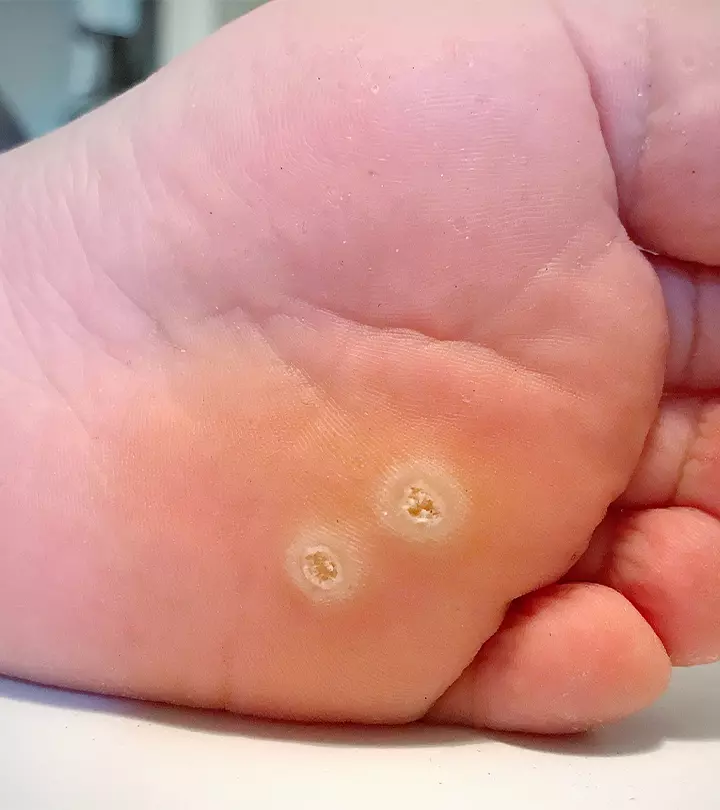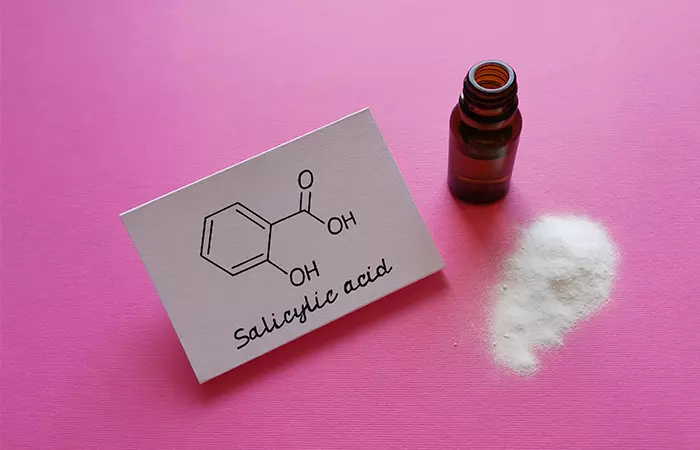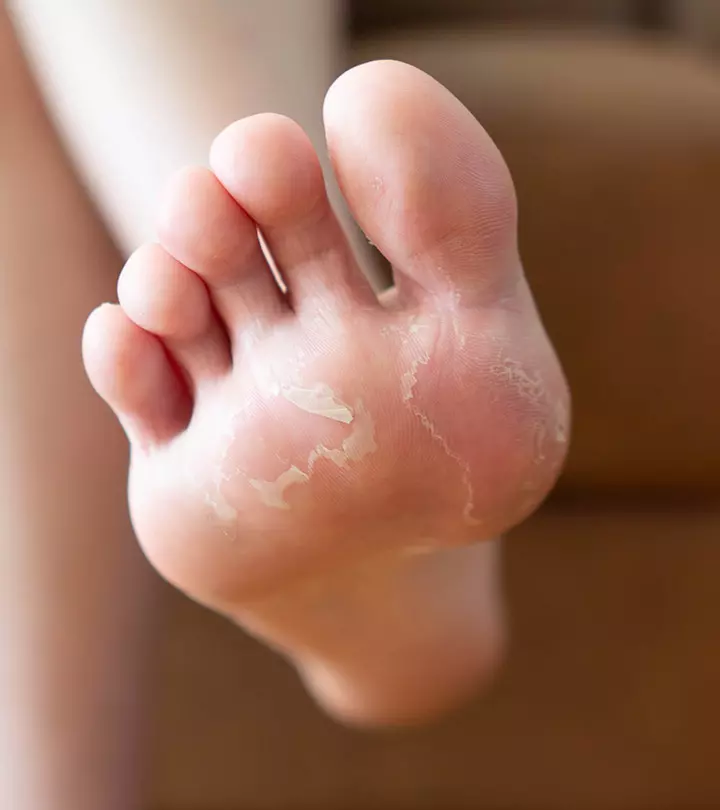How To Get Rid Of Warts On Your Feet

Image: Shutterstock
Plantar warts, which are triggered by the human papillomavirus (HPV) infection, pose minimal threat to your health (1).While they generally resolve naturally, there are several natural approaches as well to expedite the healing process. Though mostly harmless, there may be some instances where the warts display solid brown or black hues, undergo color and size alterations, or persistently recur despite home interventions. In such instances, seeking consultation from a dermatologist or foot specialist is strongly advised. Read on to know how to resolve them, with the help of home remedies.
In This Article
1. Apply Duct Tape
Employing duct tape is a surprisingly effective home remedy for managing plantar warts. This approach involves covering the wart with a piece of duct tape, which can help suffocate the wart and stimulate the immune system’s response. Begin by cleaning and drying the area thoroughly. Then, cut a piece of duct tape to fit over the wart completely. Keep the tape in place for about six days, replacing it as needed. After removing the tape, gently exfoliate the area with a pumice stone or emery board. This process can be repeated until the wart disappears. If irritation occurs or the wart persists, it’s advisable to consult a healthcare professional.
2. Apple Cider Vinegar
Harnessing the power of apple cider vinegar is a common natural remedy for treating plantar warts. Its acidic properties work to break down the wart tissue and encourage healing. To use this method, soak a cotton ball in apple cider vinegar, place it directly on the wart, and secure it with a bandage. Leave it on overnight and repeat this process until the wart diminishes. However, if discomfort or adverse reactions occur, discontinue use and consult a medical professional.
3. Tea Tree Oil
Tea tree oil presents another natural avenue to tackle plantar warts. Known for its antiviral and antimicrobial properties, tea tree oil can aid in wart removal. To apply, dilute a few drops of tea tree oil with a carrier oil like coconut or olive oil to reduce its potency. Gently dab this mixture onto the wart using a cotton swab and cover it with a bandage. Repeat this process daily until the wart fades. Remember, tea tree oil may cause skin irritation in some cases, so cease usage if any adverse reactions occur and consult a healthcare professional if needed.
4. Apply Salicylic Acid
Utilizing salicylic acid is a recognized method for addressing plantar warts. This over-the-counter treatment works by gradually dissolving the layers of the wart, allowing for its removal. Begin by soaking your foot in warm water to soften the skin. Then, gently rub the wart with a pumice stone to remove dead skin cells. Apply the salicylic acid solution or patch directly to the wart, following the product’s instructions carefully. Cover the area with a bandage or tape. Repeat this process daily, consistently removing dead skin layers as instructed, until the wart disappears. If any discomfort or adverse reactions arise, discontinue use and consult a healthcare professional.
5. Use Garlic
Exploring the natural remedy of garlic offers an alternative approach to combat plantar warts. Garlic contains potent antiviral and antimicrobial properties that can aid in eliminating warts (2). To utilize this method, crush a garlic clove to release its juices and apply the juice directly onto the wart. Cover the area with a bandage or tape and leave it on overnight. Repeat this process daily until you observe improvement. Be cautious of potential skin irritation, and if adverse reactions occur, discontinue use. As with any home remedy, consulting a healthcare professional is advisable if concerns arise.
Medical attention for warts on the feet is advisable in several scenarios:
1. Change In Appearance
If the wart changes in color, size, or appearance, or if it becomes painful, itchy, or starts bleeding.
2. Solid Brown Or Black Warts
Warts that turn solid brown or black may indicate a different condition and should be evaluated by a healthcare professional.
3. Persistent Or Recurring Warts
If home treatments or over-the-counter remedies do not lead to improvement and warts keep coming back, a medical evaluation is recommended.
4. Discomfort Or Difficulty Walking
Warts that cause pain or discomfort, making it difficult to walk or engage in regular activities, should be examined by a healthcare provider.
5. Uncertainty
If you’re unsure whether the growth is a wart or another skin condition, it’s best to seek professional advice for an accurate diagnosis.
While warts on the feet are generally harmless and can often be managed with home remedies, certain situations warrant seeking medical attention. Any changes in color, size, or appearance, as well as warts that become painful, itchy, or bleed, should be promptly evaluated by a healthcare professional. Consulting a dermatologist or podiatrist can ensure an accurate diagnosis and appropriate treatment plan, ensuring your foot health and overall well-being. Remember, when in doubt, it’s better to seek medical advice to ensure the best possible care for your condition.

























